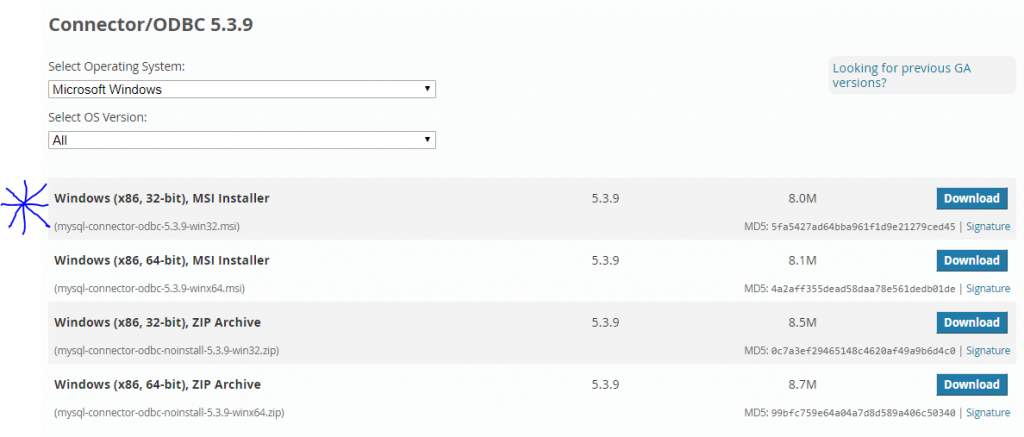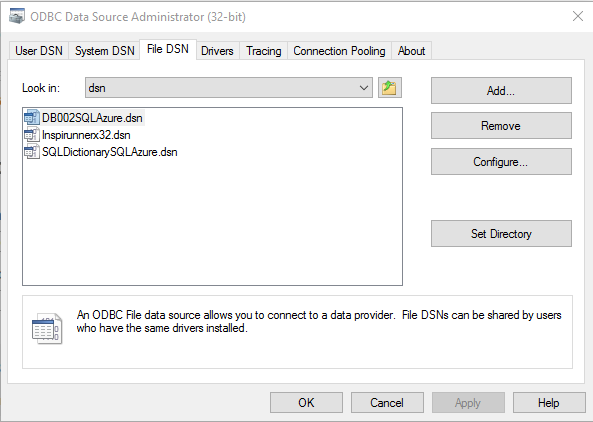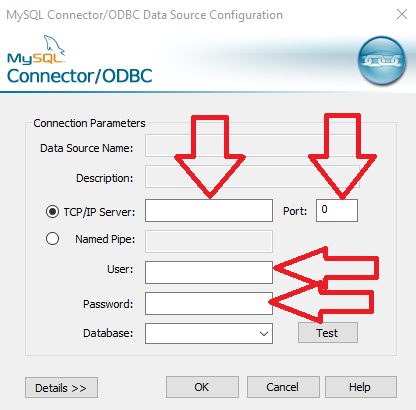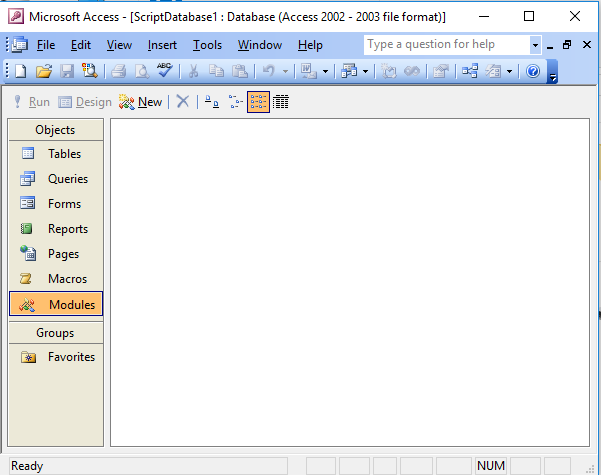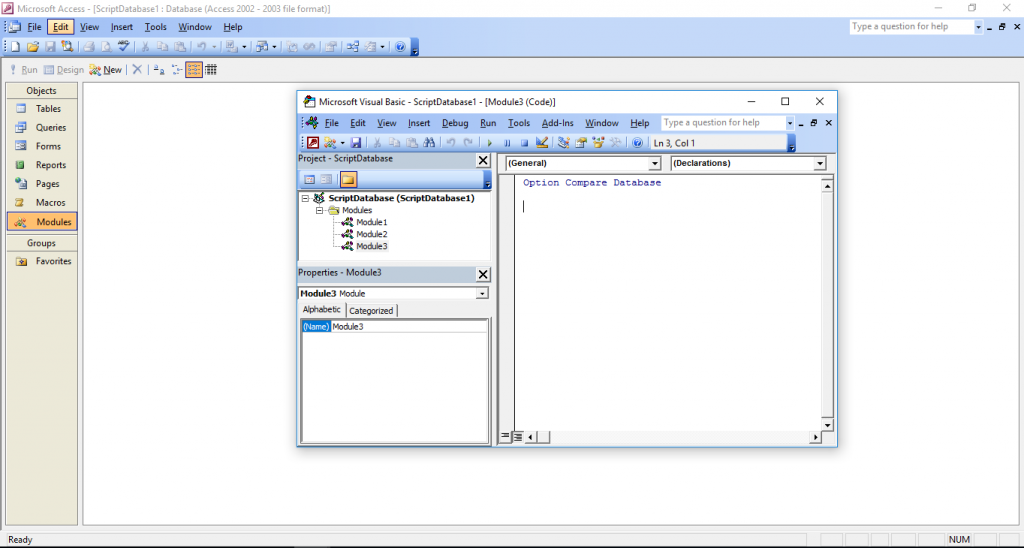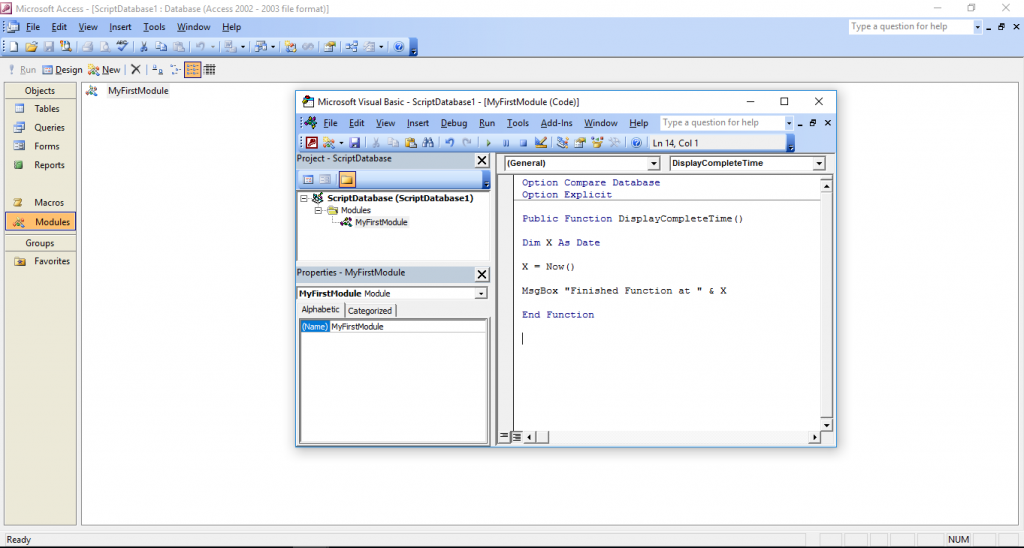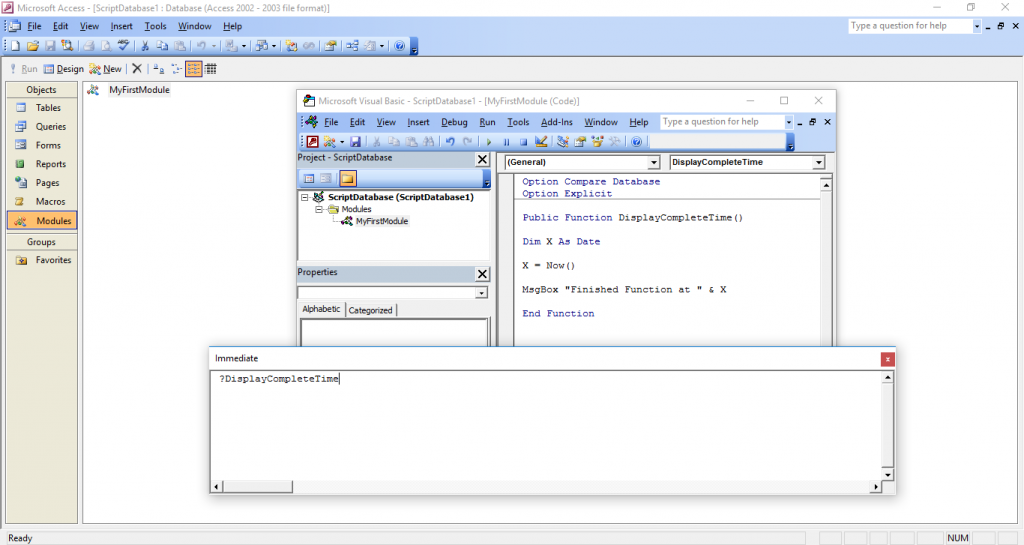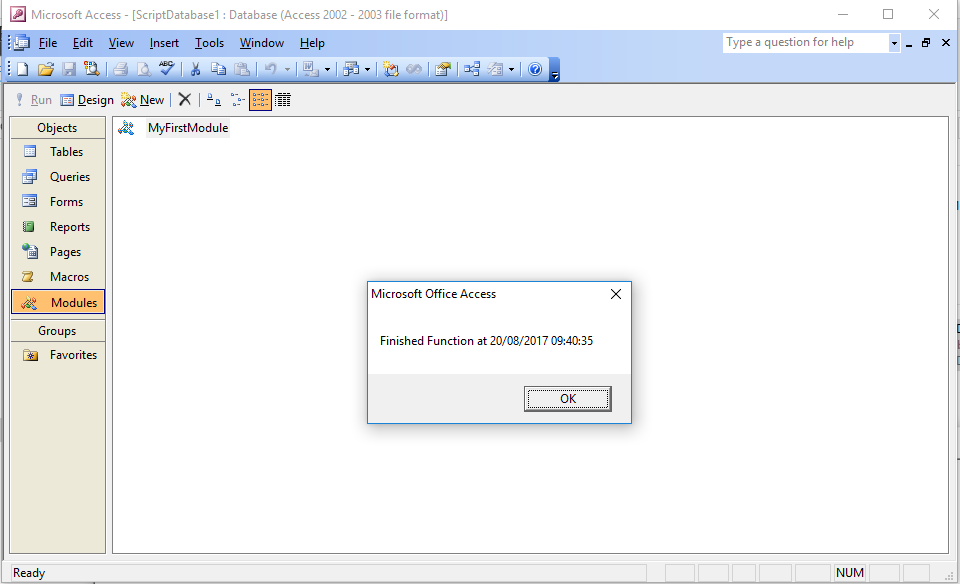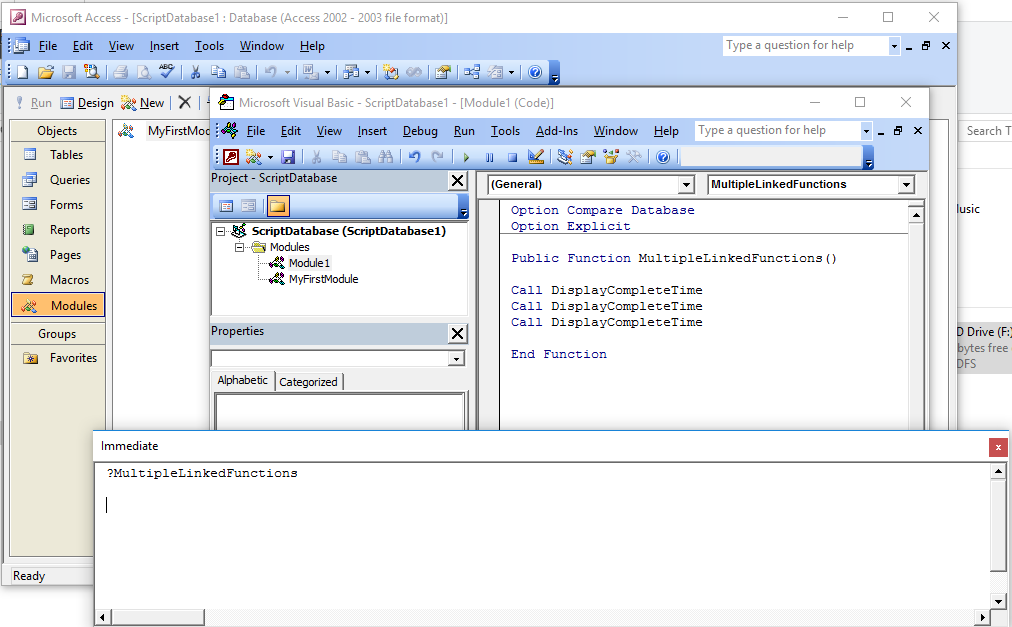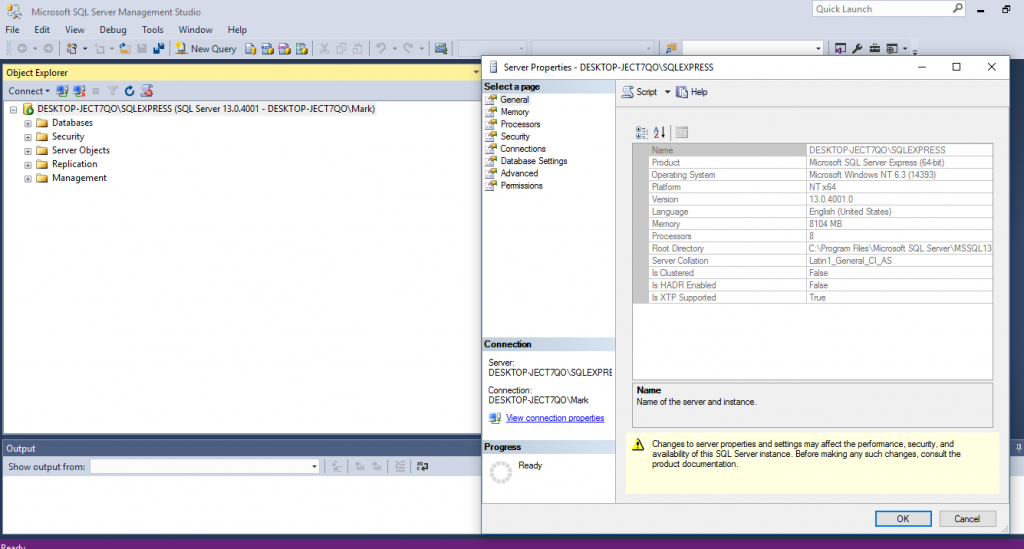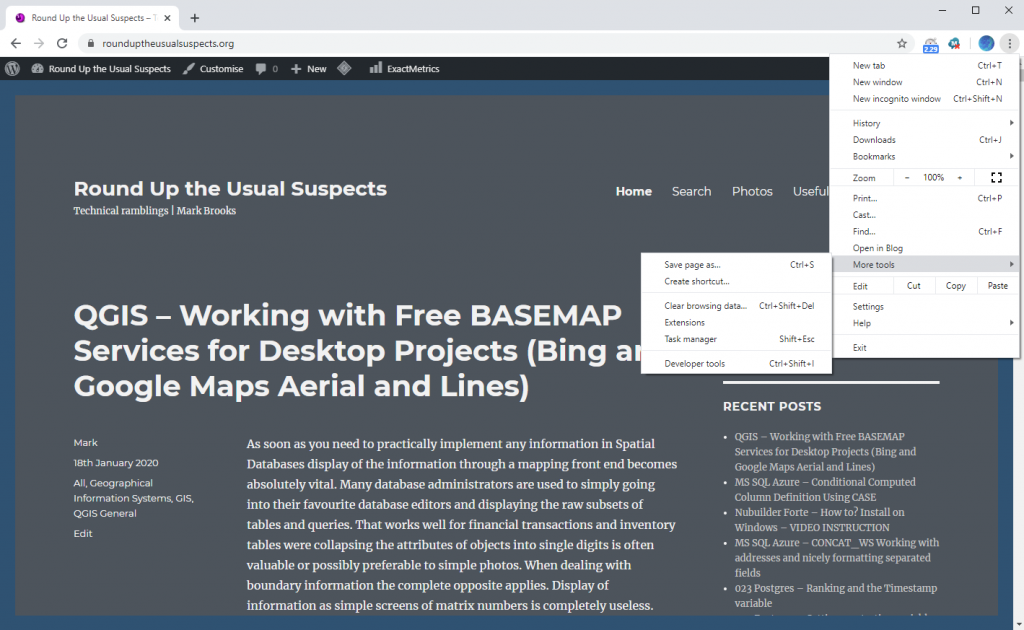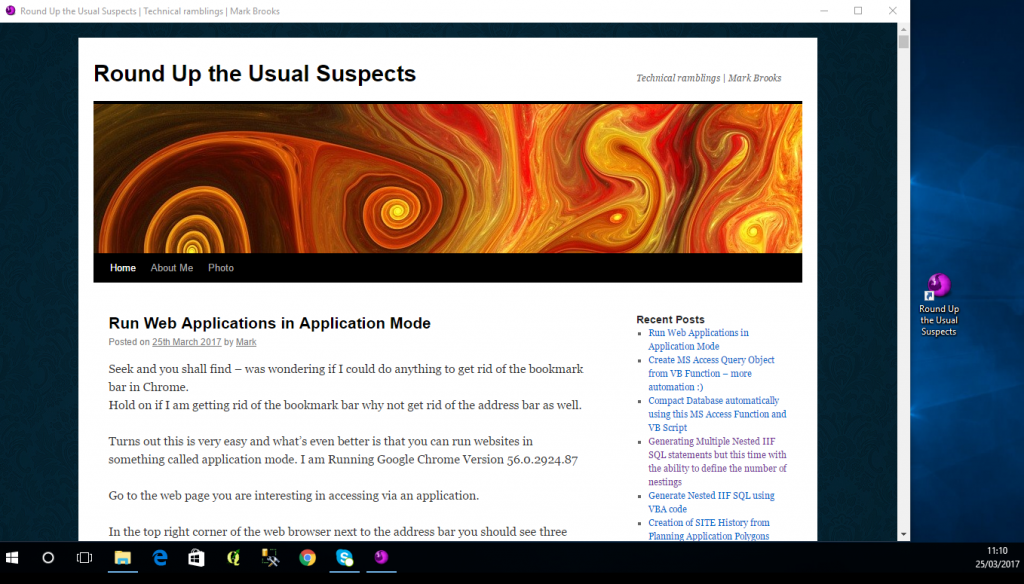The first thing you need to get sorted when moving to SQL Azure is having the ability to get your information out and safe if needs be. When experimenting with MS Azure and for applications that don’t have sensitive information it is nice to have that information available in an easily accessible format. Here are a series of functions that will copy Azure Tables linked to database into local MS Access tables with the prefix ZCOPY.
The starting point in this should be an MS Access database that should be linked to your SQL Azure Database. Only those tables that are linked will be copied. Remember the 2GB limit on Access.
I think I have got all the functions here that are required to make it work and include the complete module at the bottom but first I will breakdown the modules and list describe what each of the functions do.
First create a table to store the list of tables in the Azure Database
Public Function CreateTableT0001AzureTablesGlobal()
Dim dbs As Database
Set dbs = CurrentDb
dbs.Execute "CREATE TABLE T0001AzureTablesGlobal " _
& "(PKID AUTOINCREMENT, " _
& "AzureTableName CHAR CONSTRAINT PKID " _
& "PRIMARY KEY);"
End Function
Now Create a Function that will hold the SQL that takes the tables and makes them locally.
Public Function CreateTableT0002SQL()
Dim dbs As Database
Set dbs = CurrentDb
dbs.Execute "CREATE TABLE T0002SQL " _
& "(PKID AUTOINCREMENT, " _
& "SQL MEMO CONSTRAINT PKID " _
& "PRIMARY KEY);"
End Function
A function that allows for stepping through the table
Public Function AddByteColumn(TblName As String, FieldName As String)
'Just use byte data type as only going to use this for a flag
DoCmd.RunSQL "AlTER TABLE [" & TblName & "] ADD COLUMN " & FieldName & " BYTE;"
End Function
Step through the Linked Azure Tables and poupulate table T001 with their names
Public Function CreateandPopulateListofDBOTableNames()
'These will typically be the names of the SQL Server tables this should work both with SQL Server and SQL Azure
Dim db As DAO.Database
Dim tdf As DAO.TableDef
Dim rstList As DAO.Recordset
'Call CreateTableT0001AzureTablesGlobal
Set rstList = CurrentDb.OpenRecordset("T0001AzureTablesGlobal")
Set db = CurrentDb
For Each tdf In db.TableDefs
' ignore system and temporary tables and tables starting with T - personal choice option
If Not (tdf.Name Like "MSys*" Or tdf.Name Like "~*" Or tdf.Name Like "T*") Then
With rstList
.AddNew
rstList!AzureTableName = tdf.Name
rstList.Update
End With
End If
Next
Set tdf = Nothing
Set db = Nothing
End Function
The next function is required to strip out additional spaces in names
Public Function FindXReplaceY(FixTable As String, FixColumn As String, X As String, Y As String) As Variant
Dim strSQL As String
strSQL = "UPDATE [" & FixTable & "] SET [" & FixTable & "].[" & FixColumn & "] = REPLACE([" & FixColumn & "]," & Chr$(34) & X & Chr$(34) & "," & Chr$(34) & Y & """);"
DoCmd.RunSQL strSQL
End Function
We can now write the VBA that will write the make table SQL that once run will put one make table query into the maketableSQL table for each Azure table.
Public Function CreateMakeTableSQL()
On Error GoTo Err_CreateMakeTableSQL
Dim rstSQL As DAO.Recordset
Dim rstSQLx As DAO.Recordset
Dim dbc As DAO.Database
Dim SQLStringAdd As String
Dim LCounter As Long
Set dbc = CurrentDb
LCounter = 1
While LCounter < 9000
LCounter = LCounter + 1
Set rstSQL = CurrentDb.OpenRecordset("SELECT T0001AzureTablesGlobal.PKID, T0001AzureTablesGlobal.AzureTableName, T0001AzureTablesGlobal.XFLag1 FROM T0001AzureTablesGlobal WHERE (((T0001AzureTablesGlobal.XFLag1) Is Null));")
SQLStringAdd = "SELECT * INTO COPY" & rstSQL!AzureTableName & " FROM " & rstSQL!AzureTableName & ";"
Set rstSQLx = CurrentDb.OpenRecordset("T0002SQL")
With rstSQLx
.AddNew
rstSQLx!SQL = SQLStringAdd
rstSQLx.Update
rstSQLx.Close
End With
With rstSQL
rstSQL.Edit
rstSQL!XFLag1 = 1
rstSQL.Update
rstSQL.MoveNext
rstSQL.Close
End With
Wend
Exit_CreateMakeTableSQL:
Exit Function
Err_CreateMakeTableSQL:
Select Case Err.Number
Case 3021
Resume Exit_CreateMakeTableSQL
Case Else
Resume Exit_CreateMakeTableSQL
End Select
End Function
And finally Run all the queries
Public Function RunQueriesFromTable2(SQLSource As String)
DoCmd.SetWarnings False
Dim StartTime As Date
Dim EndTime As Date
Dim rstZ As DAO.Recordset
Dim strSQL2 As String
StartTime = Now()
Set rstZ = CurrentDb.OpenRecordset(SQLSource)
Do Until rstZ.EOF
strSQL2 = rstZ!SQL
DoCmd.RunSQL strSQL2
rstZ.MoveNext
Loop
DoCmd.SetWarnings True
EndTime = Now()
MsgBox "Finished ALL SQL queries! Process started at " & StartTime & " and finished at " & EndTime
End Function
And a script to pull all of this together
Public Function GetAzureScript()
DoCmd.SetWarnings False
Call CreateTableT0001AzureTablesGlobal
Call CreateandPopulateListofDBOTableNames
Call FindXReplaceY("T0001AzureTablesGlobal", "AzureTablename", " ", "")
Call FindXReplaceY("T0001AzureTablesGlobal", "AzureTablename", Chr(10), "")
Call AddByteColumn("T0001AzureTablesGlobal", "XFLag1")
Call CreateTableT0002SQL
Call CreateMakeTableSQL
Call FindXReplaceY("T0002SQL", "SQL", " ", "")
Call FindXReplaceY("T0002SQL", "SQL", Chr(10), "")
Call FindXReplaceY("T0002SQL", "SQL", "SELECT*INTOCOPY", "SELECT * INTO ZCOPY")
Call FindXReplaceY("T0002SQL", "SQL", "FROM", " FROM ")
Call RunQueriesFromTable("T0002SQL")
DoCmd.SetWarnings True
End Function
The complete module
Option Compare Database
Option Explicit
Public Function GetAzureScript()
DoCmd.SetWarnings False
Call CreateTableT0001AzureTablesGlobal
Call CreateandPopulateListofDBOTableNames
Call FindXReplaceY("T0001AzureTablesGlobal", "AzureTablename", " ", "")
Call FindXReplaceY("T0001AzureTablesGlobal", "AzureTablename", Chr(10), "")
Call AddByteColumn("T0001AzureTablesGlobal", "XFLag1")
Call CreateTableT0002SQL
Call CreateMakeTableSQL
Call FindXReplaceY("T0002SQL", "SQL", " ", "")
Call FindXReplaceY("T0002SQL", "SQL", Chr(10), "")
Call FindXReplaceY("T0002SQL", "SQL", "SELECT*INTOCOPY", "SELECT * INTO ZCOPY")
Call FindXReplaceY("T0002SQL", "SQL", "FROM", " FROM ")
Call RunQueriesFromTable2("T0002SQL")
DoCmd.SetWarnings True
End Function
Public Function CreateandPopulateListofDBOTableNames()
'These will typically be the names of the SQL Server tables this should work both with SQL Server and SQL Azure
Dim db As DAO.Database
Dim tdf As DAO.TableDef
Dim rstList As DAO.Recordset
'Call CreateTableT0001AzureTablesGlobal
Set rstList = CurrentDb.OpenRecordset("T0001AzureTablesGlobal")
Set db = CurrentDb
For Each tdf In db.TableDefs
' ignore system and temporary tables and tables starting with T - personal choice option
If Not (tdf.Name Like "MSys*" Or tdf.Name Like "~*" Or tdf.Name Like "T*") Then
With rstList
.AddNew
rstList!AzureTableName = tdf.Name
rstList.Update
End With
End If
Next
Set tdf = Nothing
Set db = Nothing
End Function
Public Function FindXReplaceY(FixTable As String, FixColumn As String, X As String, Y As String) As Variant
Dim strSQL As String
strSQL = "UPDATE [" & FixTable & "] SET [" & FixTable & "].[" & FixColumn & "] = REPLACE([" & FixColumn & "]," & Chr$(34) & X & Chr$(34) & "," & Chr$(34) & Y & """);"
DoCmd.RunSQL strSQL
End Function
Public Function CreateTableT0001AzureTablesGlobal()
Dim dbs As Database
Set dbs = CurrentDb
dbs.Execute "CREATE TABLE T0001AzureTablesGlobal " _
& "(PKID AUTOINCREMENT, " _
& "AzureTableName CHAR CONSTRAINT PKID " _
& "PRIMARY KEY);"
End Function
Public Function CreateTableT0002SQL()
Dim dbs As Database
Set dbs = CurrentDb
dbs.Execute "CREATE TABLE T0002SQL " _
& "(PKID AUTOINCREMENT, " _
& "SQL MEMO CONSTRAINT PKID " _
& "PRIMARY KEY);"
End Function
Public Function AddByteColumn(TblName As String, FieldName As String)
'Just use byte data type as only going to use this for a flag
DoCmd.RunSQL "AlTER TABLE [" & TblName & "] ADD COLUMN " & FieldName & " BYTE;"
End Function
Public Function CreateMakeTableSQL()
On Error GoTo Err_CreateMakeTableSQL
Dim rstSQL As DAO.Recordset
Dim rstSQLx As DAO.Recordset
Dim dbc As DAO.Database
Dim SQLStringAdd As String
Dim LCounter As Long
Set dbc = CurrentDb
LCounter = 1
While LCounter < 9000
LCounter = LCounter + 1
Set rstSQL = CurrentDb.OpenRecordset("SELECT T0001AzureTablesGlobal.PKID, T0001AzureTablesGlobal.AzureTableName, T0001AzureTablesGlobal.XFLag1 FROM T0001AzureTablesGlobal WHERE (((T0001AzureTablesGlobal.XFLag1) Is Null));")
SQLStringAdd = "SELECT * INTO COPY" & rstSQL!AzureTableName & " FROM " & rstSQL!AzureTableName & ";"
Set rstSQLx = CurrentDb.OpenRecordset("T0002SQL")
With rstSQLx
.AddNew
rstSQLx!SQL = SQLStringAdd
rstSQLx.Update
rstSQLx.Close
End With
With rstSQL
rstSQL.Edit
rstSQL!XFLag1 = 1
rstSQL.Update
rstSQL.MoveNext
rstSQL.Close
End With
Wend
Exit_CreateMakeTableSQL:
Exit Function
Err_CreateMakeTableSQL:
Select Case Err.Number
Case 3021
Resume Exit_CreateMakeTableSQL
Case Else
Resume Exit_CreateMakeTableSQL
End Select
End Function
Public Function RunQueriesFromTable2(SQLSource As String)
DoCmd.SetWarnings False
Dim StartTime As Date
Dim EndTime As Date
Dim rstZ As DAO.Recordset
Dim strSQL2 As String
StartTime = Now()
Set rstZ = CurrentDb.OpenRecordset(SQLSource)
Do Until rstZ.EOF
strSQL2 = rstZ!SQL
DoCmd.RunSQL strSQL2
rstZ.MoveNext
Loop
DoCmd.SetWarnings True
EndTime = Now()
MsgBox "Finished ALL SQL queries! Process started at " & StartTime & " and finished at " & EndTime
End Function

